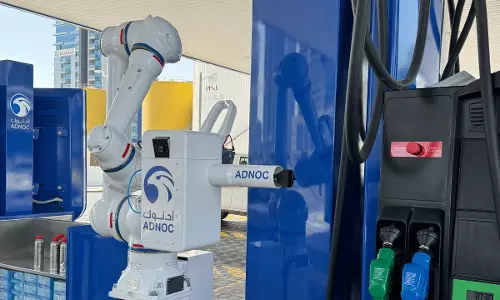
Clean air to breathe still a distant dream
text_fieldsIndia would be playing a major role in the possible new global agreement on climate change aiming at reducing greenhouse gas emissions thereby tackling the threats posed by the issue.
The country being the fourth largest emitter of greenhouse gases after China, US and the European Union, all eyes were on India’s role in reducing its carbon emissions. India has announced its plans to combat climate change and it has been welcomed by the world nations. All countries are expected to declare their Intended Nationally Determined Contributions (INDCs) on climate change ahead of the United Nations Climate Change Conference to be held in Paris towards the end of this year. The developed countries were allotted a target on emission reductions. Majority of them have informed their role in combating the carbon emissions. India’s contribution is assessed to be the most viable when compared to that of the US and China and is more in favour of the climate and atmosphere. India is anticipated to cut down the rate of carbon emissions up to 35 per cent and the estimated expenditure is 2.5 crore dollars. The country would strive to achieve its goal by developing alternative measures like solar energy and wind power and by increasing afforestation and the production of substitute energy would be increased to 40 per cent. The rate of the greenhouse gas emissions have increased the earth’s surface temperature to a dangerously high level compared to the period before the Industrial Revolution. The global temperature has increased greatly in the past years. If the emissions continue at the present rate, temperature would rise to around 4 degree celcius by the end of the century. Even if the nations join hands towards fighting the climate change by reducing their carbon emissions, a 3.5 degree rise in temperature is likely to occur. Therefore it’s necessary that the global measures announced to resolve the issue should be carried out at least in the proposed standards.
Since the developed countries like China and US are responsible for the highest amount of carbon emissions, their economic and technical cooperation is indispensable in resolving the matter. The 2.5 lakh crore dollars required is expected to be obtained through domestic and foreign collections. India also expects financial as well as technological assistance from the Green Climate Fund for developing nations. But until the fund is realized, the agreed measures would remain just in papers. The issue is expected to be brought up in during the Paris conference. Beyond the declarations made, political will is required for India’s plans to succeed in its goals which are practically, possible. The Cochin International Airport that operates completely on solar power has become a reality. The airport authorities have set a model by installing around half lakh solar panels for the purpose. Studies are being conducted to make solar power cheaply and easily available. Electricity from seawater and wind would gradually enable us to shift from coal and petrol energies. While different announcements and feasible measures related to the issue are being adopted on one hand, new policies capable of failing those attempts are being formed on the other. We who declared to cut down the greenhouse gas emissions in the coming 15 years are simultaneously going to double coal mining in five years. Handing over the coal mines to private companies also pave way for environmental damage for which there would be no ultimate solution.
Unpolluted atmosphere is necessary not just for the protection of the environment but also for the health and wellbeing of human beings and other living things. Along with curbing carbon emissions, steps should be taken for de-polluting the air in cities. Technology and moves from the different governments have aided the nations to cut down the rate of pollution up to 12 per cent during 2005-10. But clean and fresh air to breathe still remains a distant dream. Delhi and other metros are considered the most polluted cities in the world. Unless a standard emission rate of pollution is set for vehicles and industries and ensuring that they are being properly followed, situations would remain the same. Unfortunately an index or proper instruments for measuring the air pollution are lacking even in big cities. All citizens are entitled to clean air and this would be ensured only if the government initiates steps based on the National Air Quality Index (NAQI). The drawbacks and disparities in our policies and measures would fail our goods intentions in the case of earth as well as the atmosphere.























